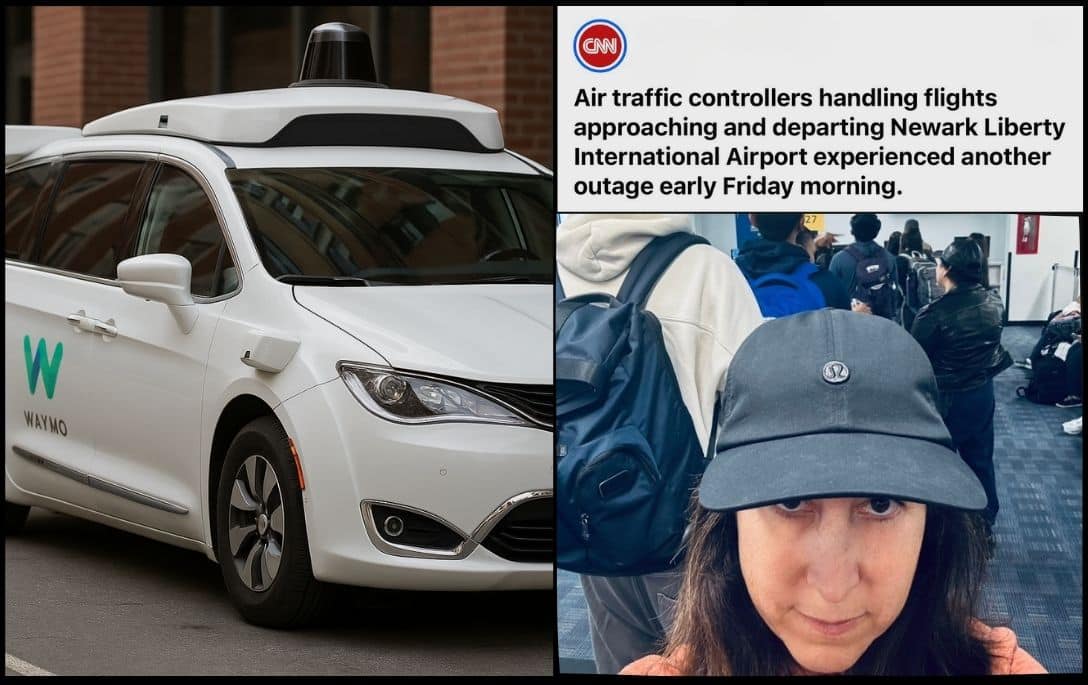Waymo’s self-driving car recall and Newark’s shutdown weren’t just tech failures—they’re reminders that every business needs a plan to respond, communicate, and adapt fast.
It doesn’t matter if you’re a tech startup, a health system, a retail chain, or a logistics firm—when your systems fail, your customer experience is on the line. Two recent high-profile failures make that lesson crystal clear.
What Happened:
Waymo, Alphabet’s self-driving vehicle company, issued a recall of 1,212 robotaxis due to a software glitch that caused the cars to collide with stationary objects like gates and chains. No injuries occurred, but the damage to public confidence and the need for federal review were immediate.
During the same timeframe, another headline: Newark Liberty International Airport temporarily shuts down when an outdated flight management system crashed. Flights were grounded, travelers left in limbo, including me (see my Linkedin post) and the disruption reached far beyond the terminal.
These weren’t isolated “tech problems.” They were operational failures with real customer impact. And they share a single root lesson every business leader should be asking:
Are You Ready for a Tech Crisis?
Because here’s the truth: tech failures don’t just impact tech companies. They affect brands of every kind, and how you respond determines more than recovery—it defines your reputation.
When your system goes down, your app crashes, or something unexpected interrupts the customer journey—what’s your plan?
The Importance of Customer Journey Management:
Every experience you design for customers must include a backup plan. Not just for operations, but for communication. And yet, this part of the journey is often overlooked.
This is where customer journey mapping becomes mission-critical. It’s not just about outlining the ideal path—it’s about designing for the moments when things go wrong:
- Are you planning the communication flow when something fails?
- Are your teams prepared to respond fast and consistently across all channels?
- Do you have real-time checkpoints for when to act, what to say, and who says it?
These aren’t extras. They’re essential. And yet, they’re missing in most experience strategies I see.
What Smart Companies Do When Technogoly Goes Wrong:
The brands that bounce back from failure fastest don’t just patch the problem—they design for disruption. They’ve mapped their experience from both the best-case scenario and the breakdown moment.
1. They Test. Analyze. Adjust. Repeat.
They don’t stop testing once something goes live. Real-world conditions are messy, and great companies build continuous learning into their CX strategy.
2. They Communicate Proactively.
Customers will forgive failure. But they don’t forgive silence. A well-timed, empathetic message during a crisis can protect your brand and even deepen loyalty.
If you want to learn more about this, I teach exactly how to do it in my LinkedIn Learning course about Doing Communication Right For Sustainable Success.
3. They Map the Journey—Including the Unexpected
They know that experience design isn’t just about how things should go—it’s about what happens when they don’t. That’s why smart companies build customer journey maps that don’t just celebrate the ideal path, but plan for breakdowns, disruptions, and communication under pressure.
Are you ready for the moment something breaks?
If your customer journey map only accounts for the perfect experience—and not for delays, outages, or breakdowns—you’re missing the most critical part. And if your communication plan isn’t clearly mapped across teams and touchpoints, recovery becomes reaction.
Remember: when tech goes wrong, your response isn’t just a fix—it is the experience.
That’s what Doing CX Right® is about—designing for real-world moments that keep customers coming back, not running to a competitor or venting their frustration online.


